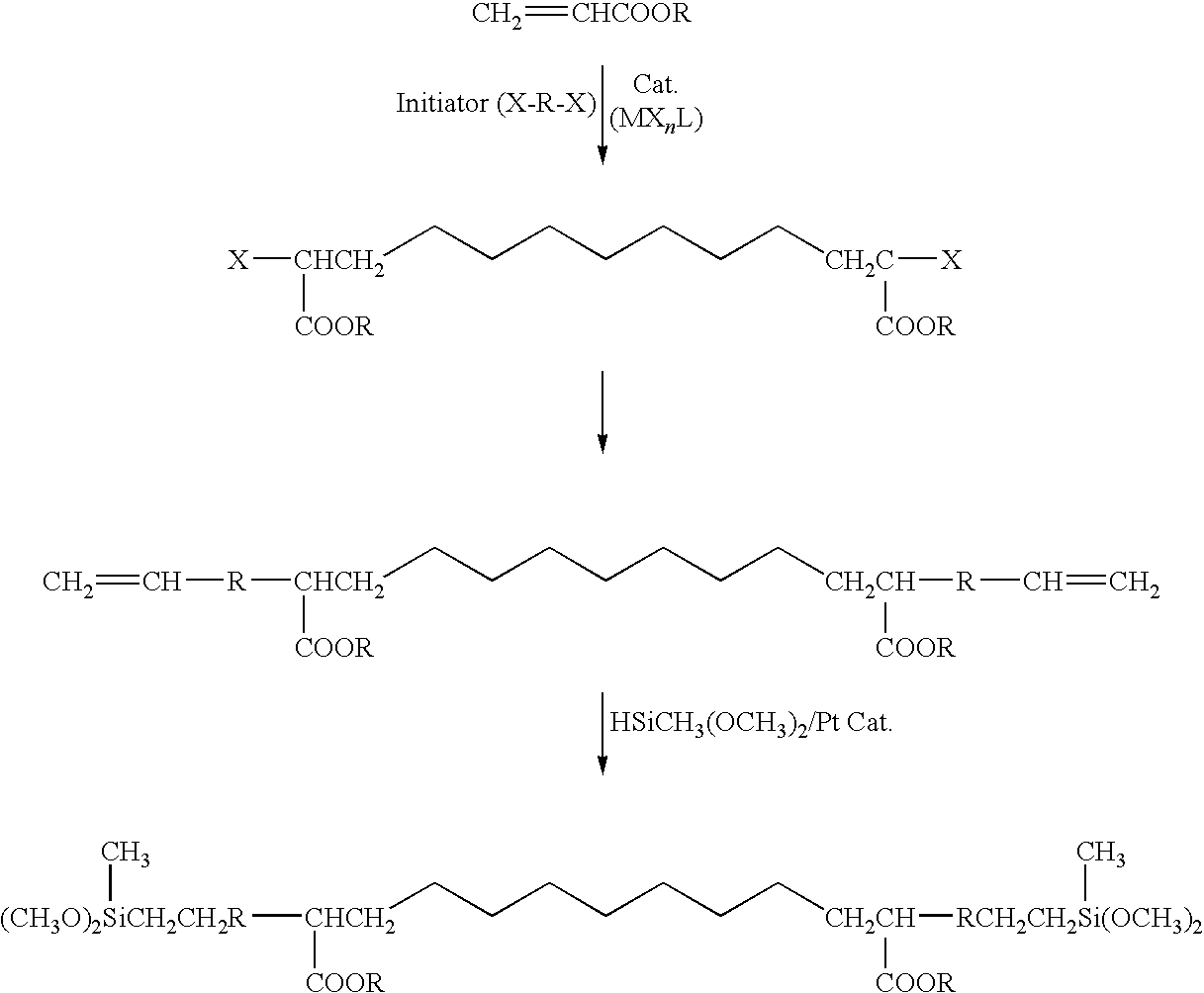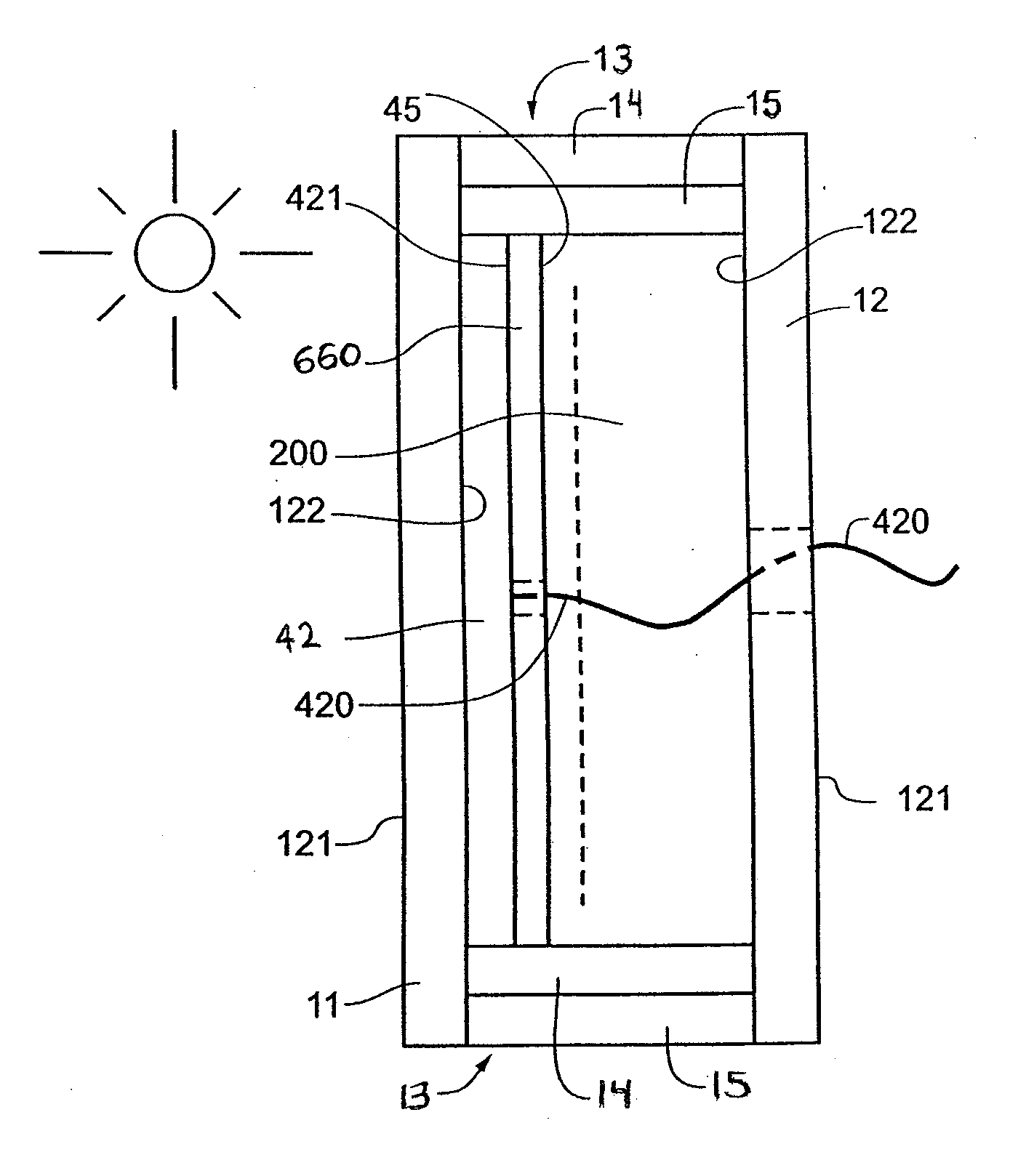Photovoltaic Glazing Assembly and Method
- Summary
- Abstract
- Description
- Claims
- Application Information
AI Technical Summary
Benefits of technology
Problems solved by technology
Method used
Image
Examples
Embodiment Construction
[0039]The following detailed description and figures are exemplary in nature and are not intended to limit the scope, applicability, or configuration of the invention in any way. Rather, the following description and figures provide practical illustrations for implementing exemplary embodiments of the present invention.
[0040]FIG. 1 is a perspective view of a photovoltaic assembly 10 according to some embodiments of the invention. FIG. 1 shows the assembly 10 including a first pane, or substrate 11, a second pane, or substrate 12 and a sealing system 13, which is between the first 11 and second 12 substrates and joins (e.g., seals) them together. The first (or “exterior”) major surfaces 121 of the substrates 11, 12 face outward (away from each other), and the second (or “interior”) major surfaces 122 face inward (toward each other). Thus, the illustrated substrates 11, 12 are spaced apart from each other by the seal system 13. The seal system 13 in FIG. 1 is shown schematically for e...
PUM
 Login to View More
Login to View More Abstract
Description
Claims
Application Information
 Login to View More
Login to View More - R&D
- Intellectual Property
- Life Sciences
- Materials
- Tech Scout
- Unparalleled Data Quality
- Higher Quality Content
- 60% Fewer Hallucinations
Browse by: Latest US Patents, China's latest patents, Technical Efficacy Thesaurus, Application Domain, Technology Topic, Popular Technical Reports.
© 2025 PatSnap. All rights reserved.Legal|Privacy policy|Modern Slavery Act Transparency Statement|Sitemap|About US| Contact US: help@patsnap.com



